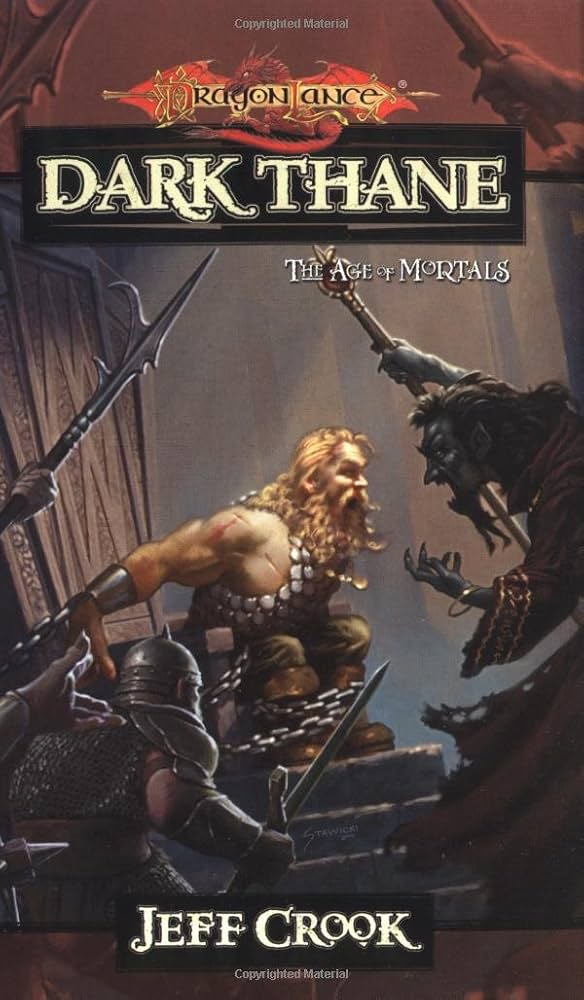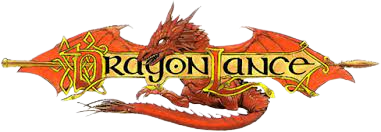Dark Thane

Table of Contents
ToggleOverview
Dark Thane is a political and character-driven fantasy novel focused on the inner workings of dwarven society, specifically the Neidar (Hill Dwarves) and Daergar (Dark Dwarves), following the War of Souls. Set in the dwarven realm of Thorbardin, the story dives into corruption, ambition, betrayal, and the crumbling of tradition, all through the lens of a new, ambitious protagonist: Glint Ettinhammer, a Neidar scholar and reluctant politician.
This novel offers a very different tone compared to traditional Dragonlance adventures—it’s more akin to Game of Thrones meets The Silmarillion, but in a dwarven kingdom steeped in ancient custom, distrust, and deadly power plays.
Main Characters
Glint Ettinhammer – A Neidar (hill dwarf) scribe and outsider who becomes enmeshed in the deadly politics of Thorbardin. Though idealistic and intelligent, he’s caught between factions and forced to navigate treacherous waters to survive.
Gneiss – The current High Thane of the Daergar (Dark Dwarves). Ruthless, calculating, and manipulative. He has his eyes on greater power and seeks to reshape Thorbardin through force and fear.
Selquist – A loyal friend to Glint, and one of the few dwarves who maintains a moral compass in the middle of political decay.
Various Thanes – Leaders of the dwarven clans, each with their own agendas. They make up the Council of Thanes, the ruling body of Thorbardin. Their constant mistrust and bickering make them ripe for manipulation.
Plot Summary
The novel begins in the wake of the War of Souls, with the dwarven kingdom of Thorbardin in turmoil. The ancient society is fractured, weary from war, and distrustful of outsiders. The Council of Thanes, who rule by clan representation, is paralyzed by infighting and mutual suspicion.
Glint Ettinhammer, a hill dwarf with a scholarly background, arrives in Thorbardin as a neutral observer, sent to help document and understand the legacy of dwarven culture. However, his presence immediately stirs controversy, as many still view the Neidar as traitors or outsiders due to centuries-old grievances.
As Glint digs deeper into the political structure, he begins to uncover a plot by Gneiss, the Dark Dwarf Thane, to consolidate power and make himself High King—a position not held in ages. Gneiss is systematically removing rivals, controlling trade and supply routes, spreading lies, and manipulating the other thanes into paranoia and isolation.
At first, Glint tries to remain neutral, but as he witnesses murders, betrayals, and coups, he becomes an unwilling participant in the game. He’s drawn into the confidence of some of the more reasonable thanes, who hope that Glint’s perspective and voice might help prevent a total collapse of dwarven society.
However, it becomes clear that Gneiss’s ambitions are more dangerous than imagined. With the rise of dark magic and ancient forces, Gneiss is willing to plunge Thorbardin into civil war to gain control.
Glint, with few allies and fewer resources, must outmaneuver a master manipulator, using not just his intelligence but his growing leadership and courage. In the climax, the Council is shattered by assassinations and fear, and Gneiss claims rulership, but his victory is hollow. Dwarven society is now under a dark cloud, and the events set the stage for future strife.
The book ends with Glint in exile, broken but wiser, bearing witness to the fall of tradition and the rise of tyranny in his people’s greatest stronghold.
Themes
Power and Corruption – The novel explores how power, when unchecked and driven by fear, can erode even the strongest institutions. Gneiss represents the rot at the heart of dwarven politics.
Tradition vs. Change – Glint, a Neidar, represents knowledge, diplomacy, and flexibility. The Thanes, on the other hand, are obsessed with maintaining dwarven customs—even when they’re manipulated or self-destructive.
Outsider Perspective – As a hill dwarf, Glint is treated as an outsider by mountain dwarves. His status allows him to see flaws in the system but also marks him as a target for prejudice and political scapegoating.
Moral Ambiguity – Unlike many Dragonlance novels with clear good vs. evil, Dark Thane thrives in the gray areas. Even “good” characters must compromise, and “bad” ones often believe they’re saving their people.
The Cost of Truth – Glint seeks to record history, preserve truth, and inform others. But the truth becomes dangerous in a society ruled by fear and lies.
Tone & Style
Jeff Crook writes Dark Thane in a dense, atmospheric, and political style. The pace is deliberate but full of tension. The book leans heavily into court intrigue, backroom deals, and ideological warfare rather than action or adventure.
The setting—Thorbardin’s deep, echoing halls, dim corridors, and ancient chambers—adds to the mood, creating a claustrophobic and oppressive atmosphere. You can feel the weight of dwarven history pressing down on every scene.
Reception
Dark Thane is appreciated by fans who enjoy dwarven lore and more mature, political fantasy. It’s not as action-packed as other Dragonlance entries but makes up for it with deep worldbuilding and strong character psychology.
Highlights include:
- The complex portrayal of dwarven society
- The tragic arc of Glint Ettinhammer
- A rare focus on intrigue over combat
However, some readers who expect a more traditional heroic quest or fast-paced fantasy may find it slow or heavy.
Final Thoughts
Dark Thane is one of the most introspective and politically charged novels in the Dragonlance setting. It trades swords and sorcery for councils, secrets, and betrayals. Through Glint Ettinhammer’s eyes, we see a great civilization unraveling from within, and we’re reminded that sometimes the greatest battles are not fought on battlefields, but in the corridors of power.
